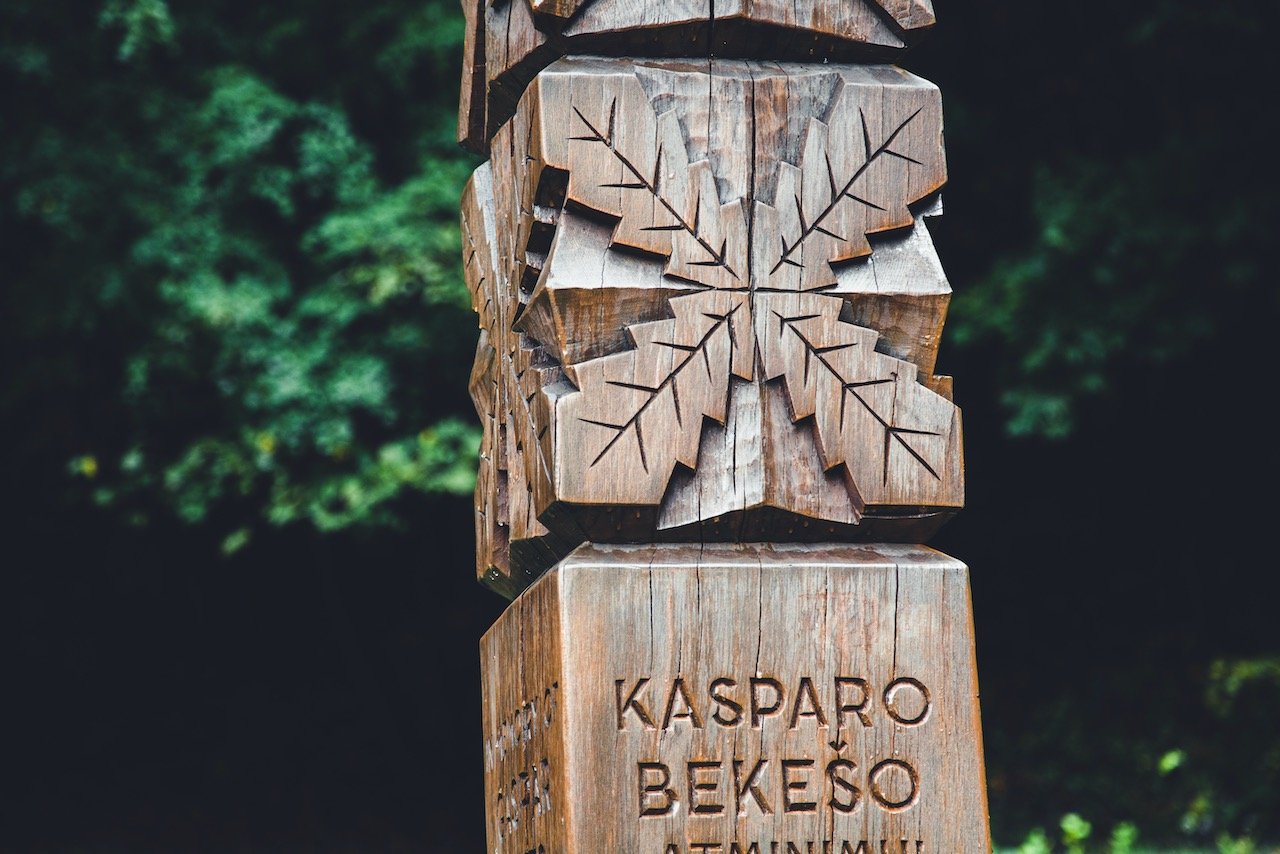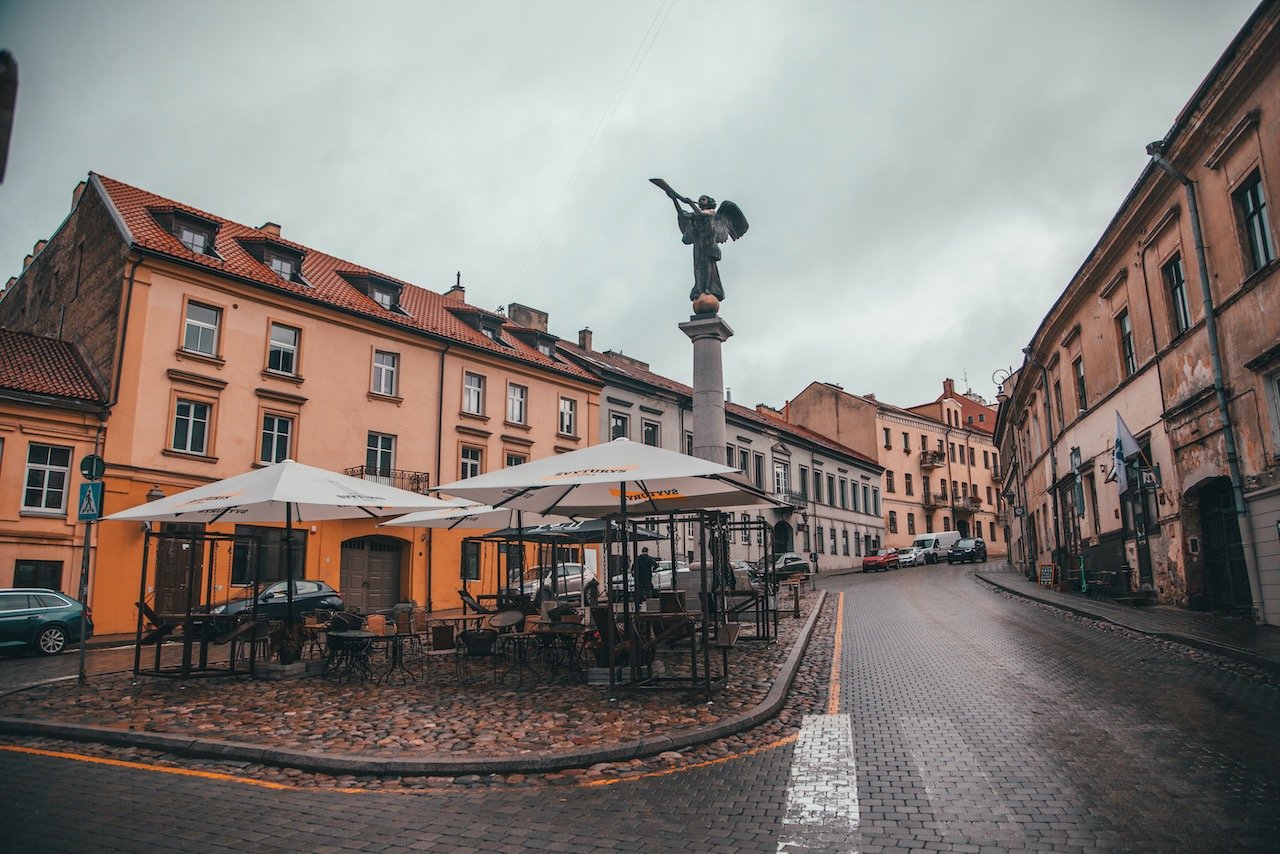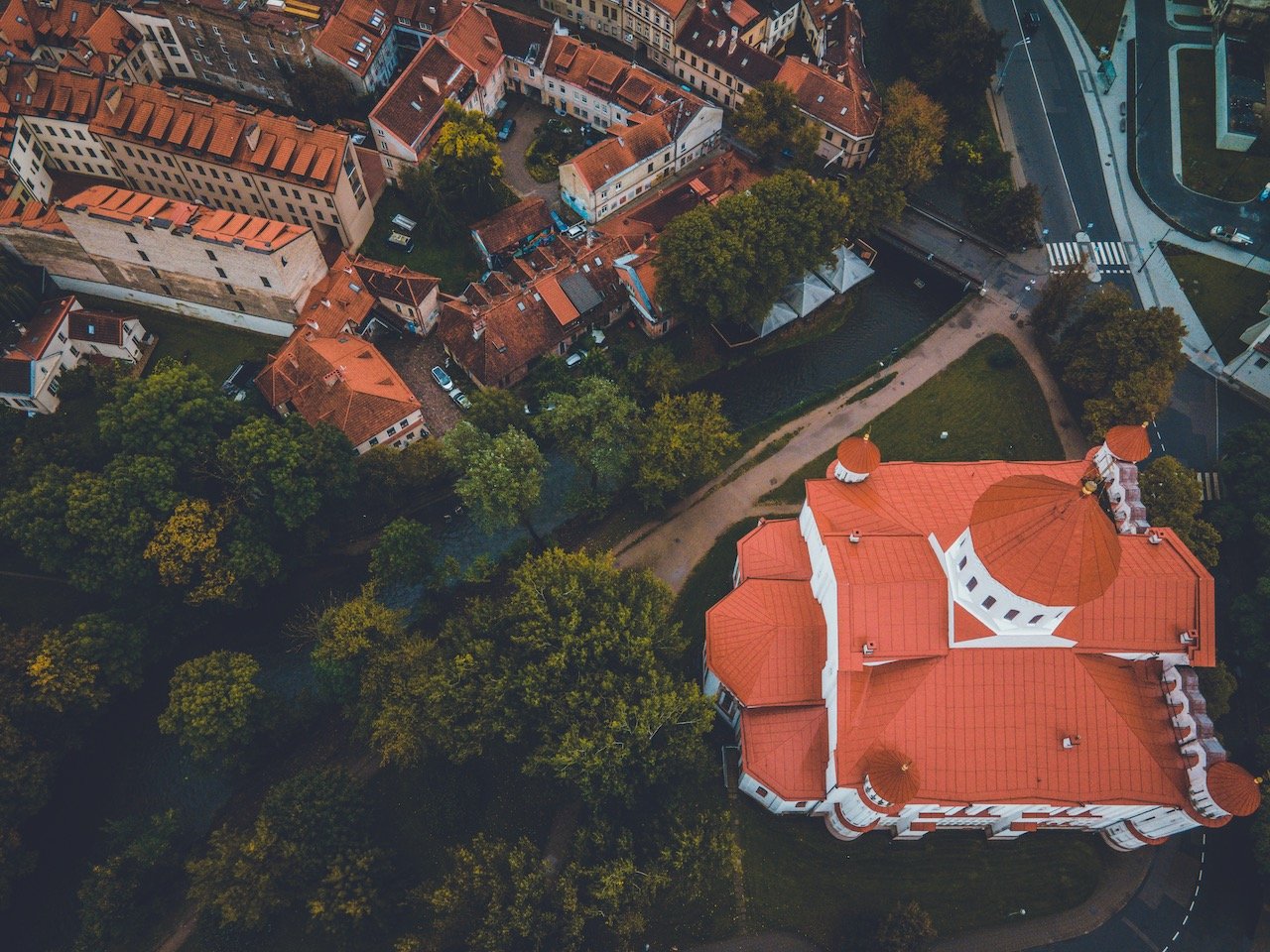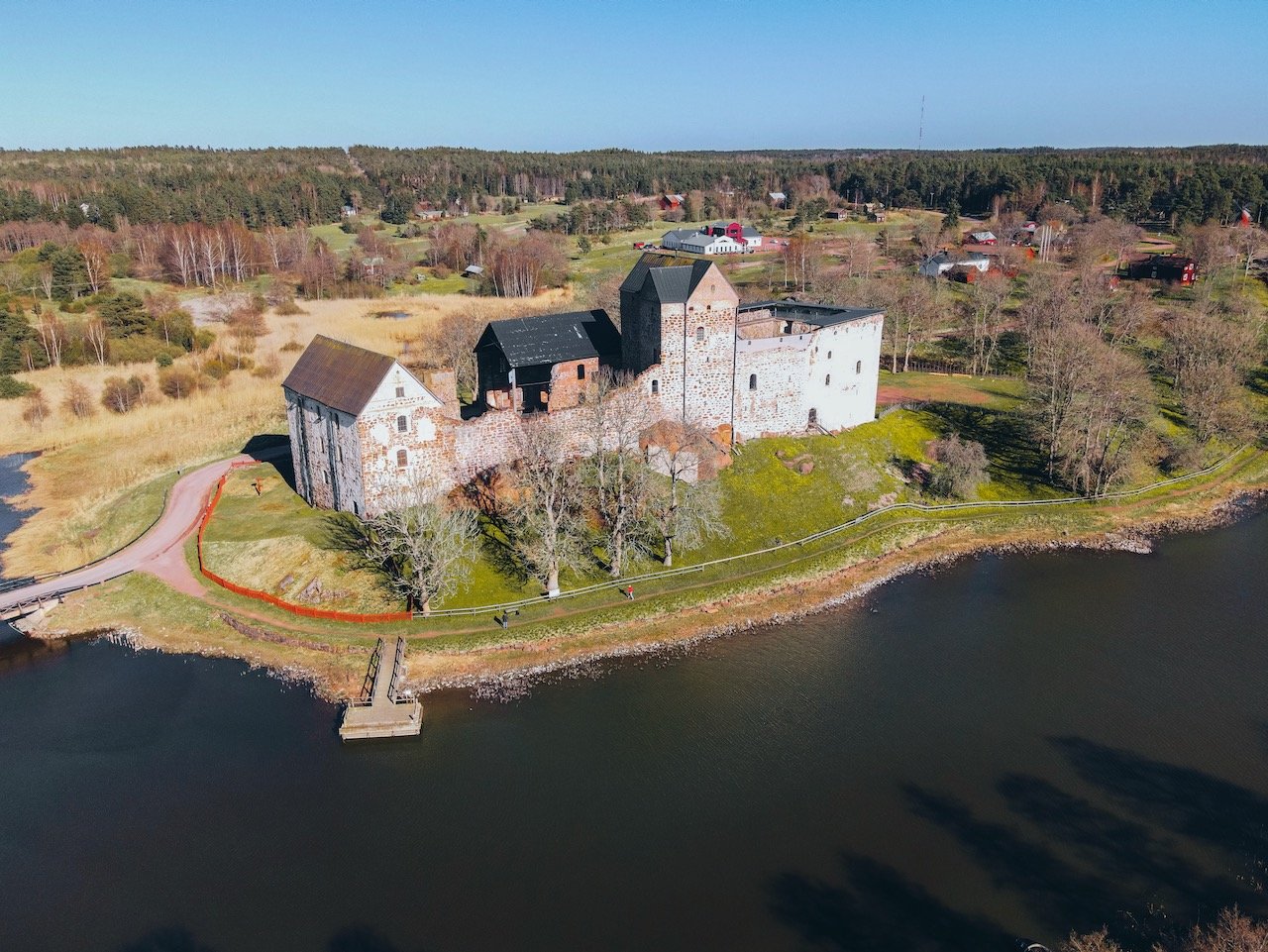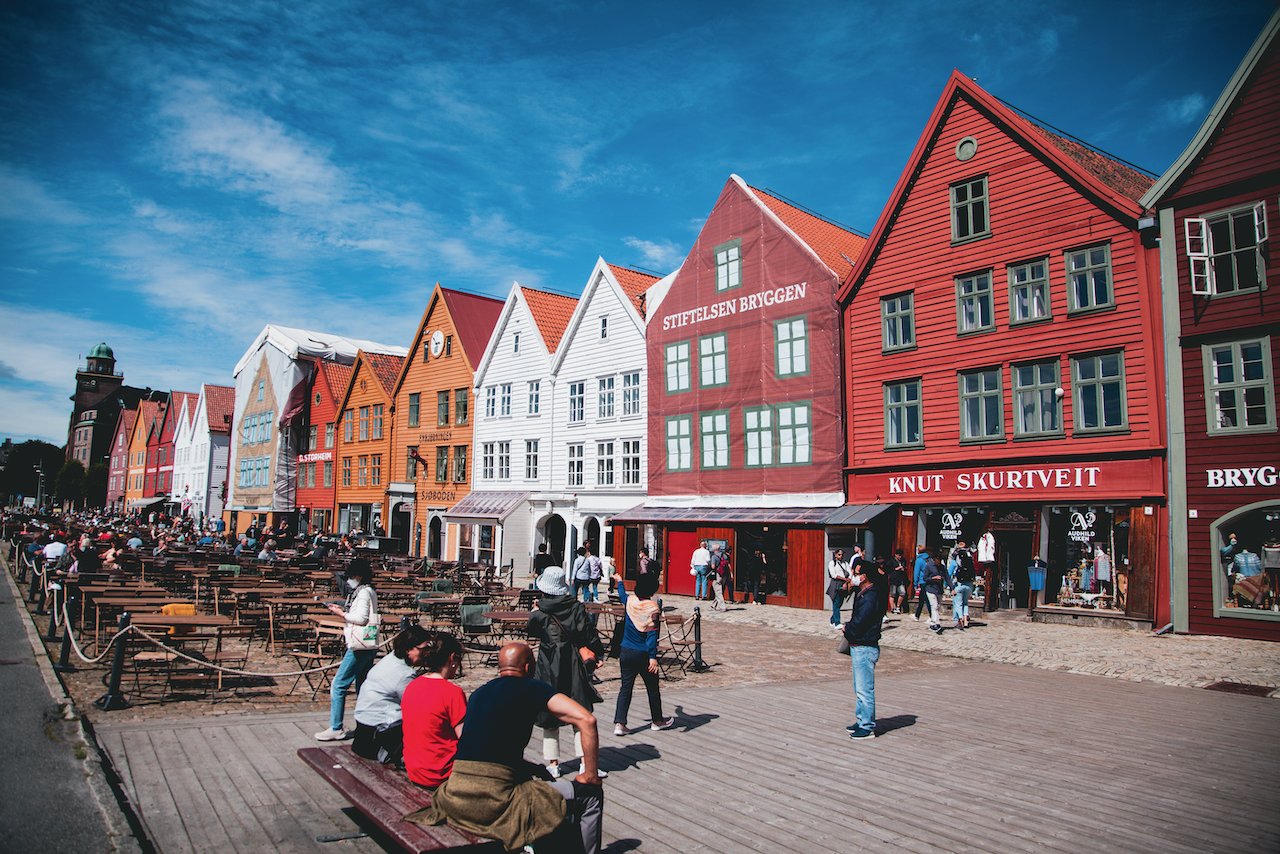A tour through Vilnius, the capital city of Lithuania
(Some links in this post are affiliate links. If you click through and take action, I'll be compensated.) If you are also interested in any PRINTS from any of my posts, be sure to check out my store where you can buy prints as posters, in metal/wooden frames or on canvas.
When you consider Lithuania, it is usually grouped together as a triumvirate with the other Baltic States of Latvia and Estonia as all gained their independence after the collapse of the Soviet Union in 1991. When you have spent time in their capital cities (Riga, Latvia and Tallinn, Estonia) however, you will realize just how subtly different each one is.
Vilnius was my last Baltic capital to visit and I had been wanting to go there for quite some time. Its Old Town was designated a UNESCO World Heritage site back in 1994. Furthermore, Vilnius itself is a Gamma Global City, meaning that it plays a large role as an economic link among other countries. As the 2009 Capital of Culture, Vilnius is starting to emerge as a modern, forward thinking European city.
I have written other blog posts on Riga (Post here - Riga, Latvia: a look at the largest city in the Baltics) and Tallinn (Post here - Why Tallinn, Estonia is a hidden gem in the Baltics) and I can honestly say that Vilnius is my favorite Baltic city to visit, for reasons that will become clearer in the entirety of this post. The city was packed with stuff to see and do, it was VERY cheap, and I found the people to be very endearing (the trifecta).
Check out my drone video of Vilnius, Lithuania below!
Unfortunately, the weather was not on my side as the rain was nearly constant during my entire trip. The optimist in me brushed it off (literally) and toured the city anyway, looking for small breaks in the weather to send Toby (my drone) up into the skies to get some great aerial shots.
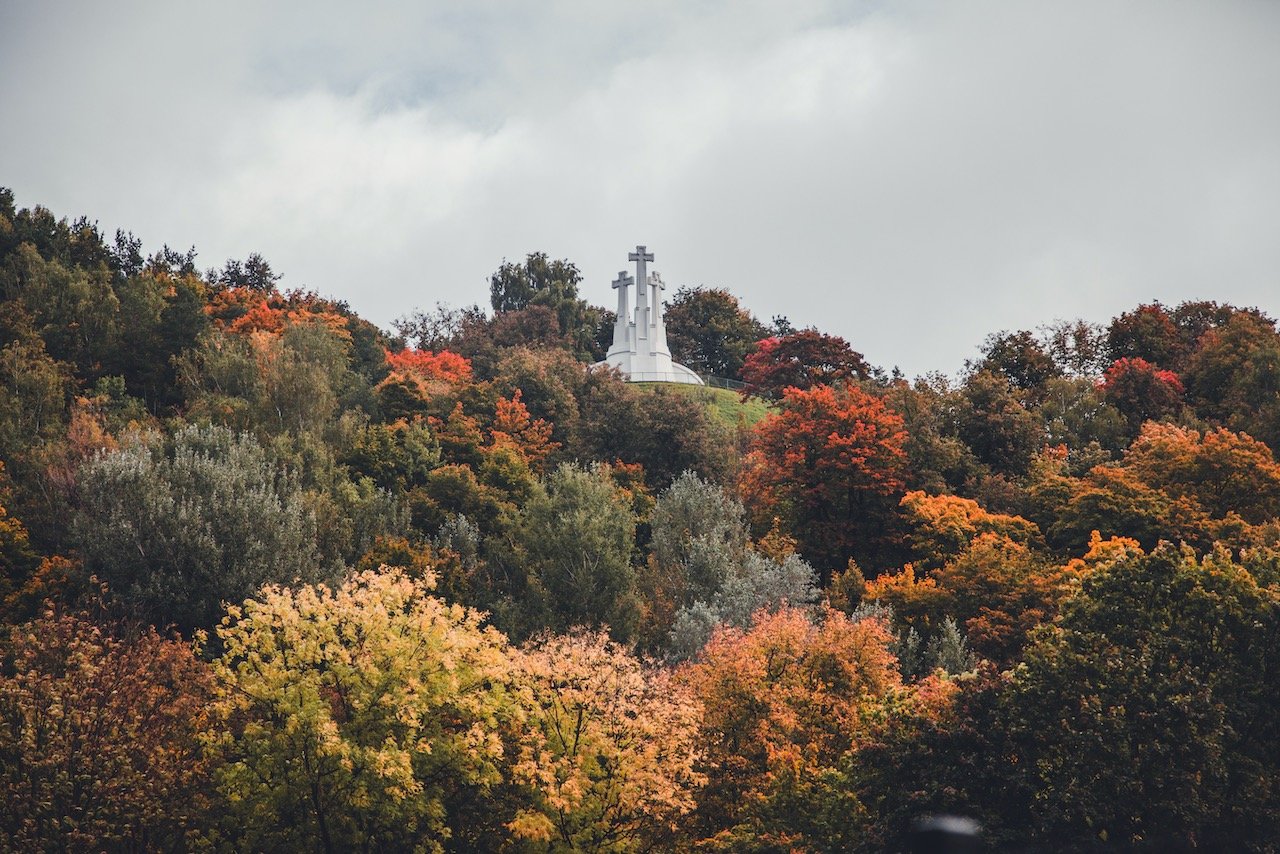
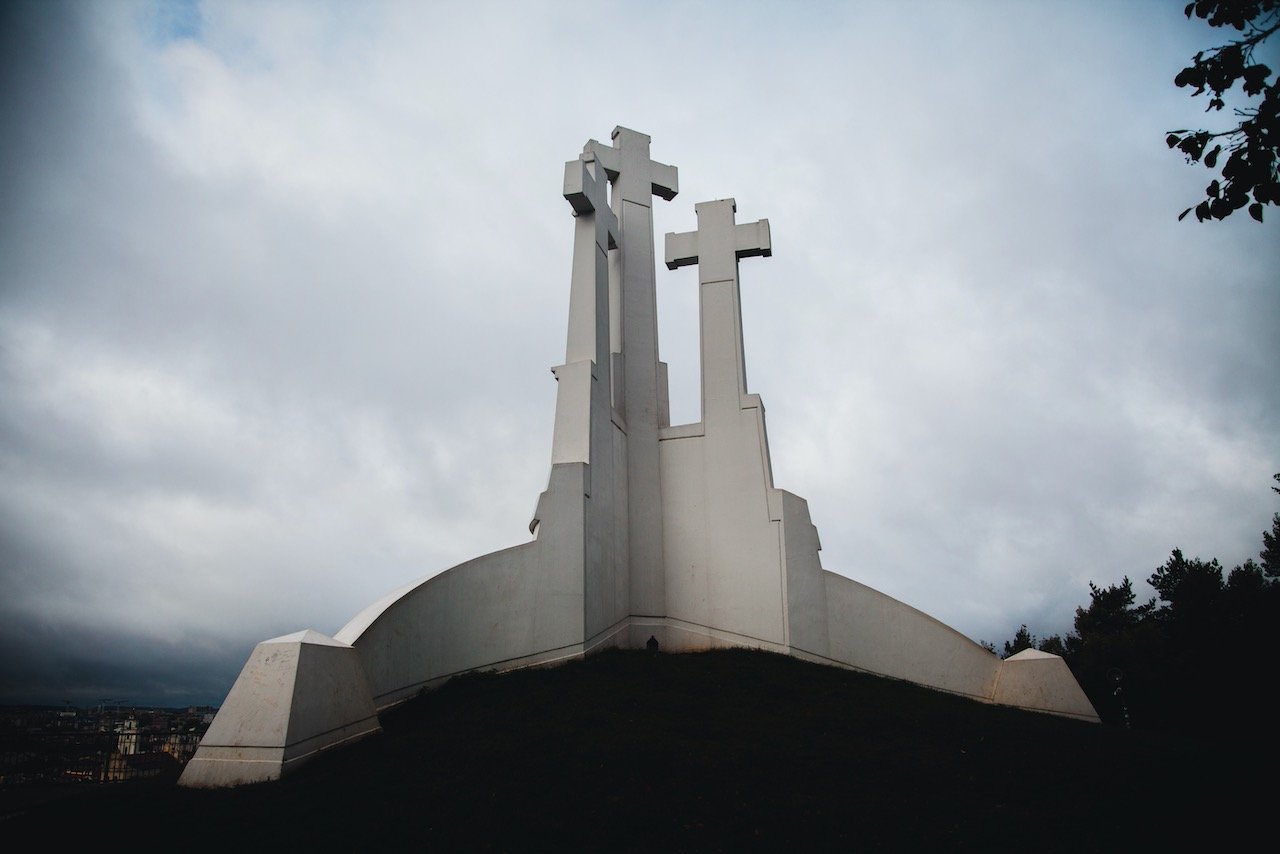
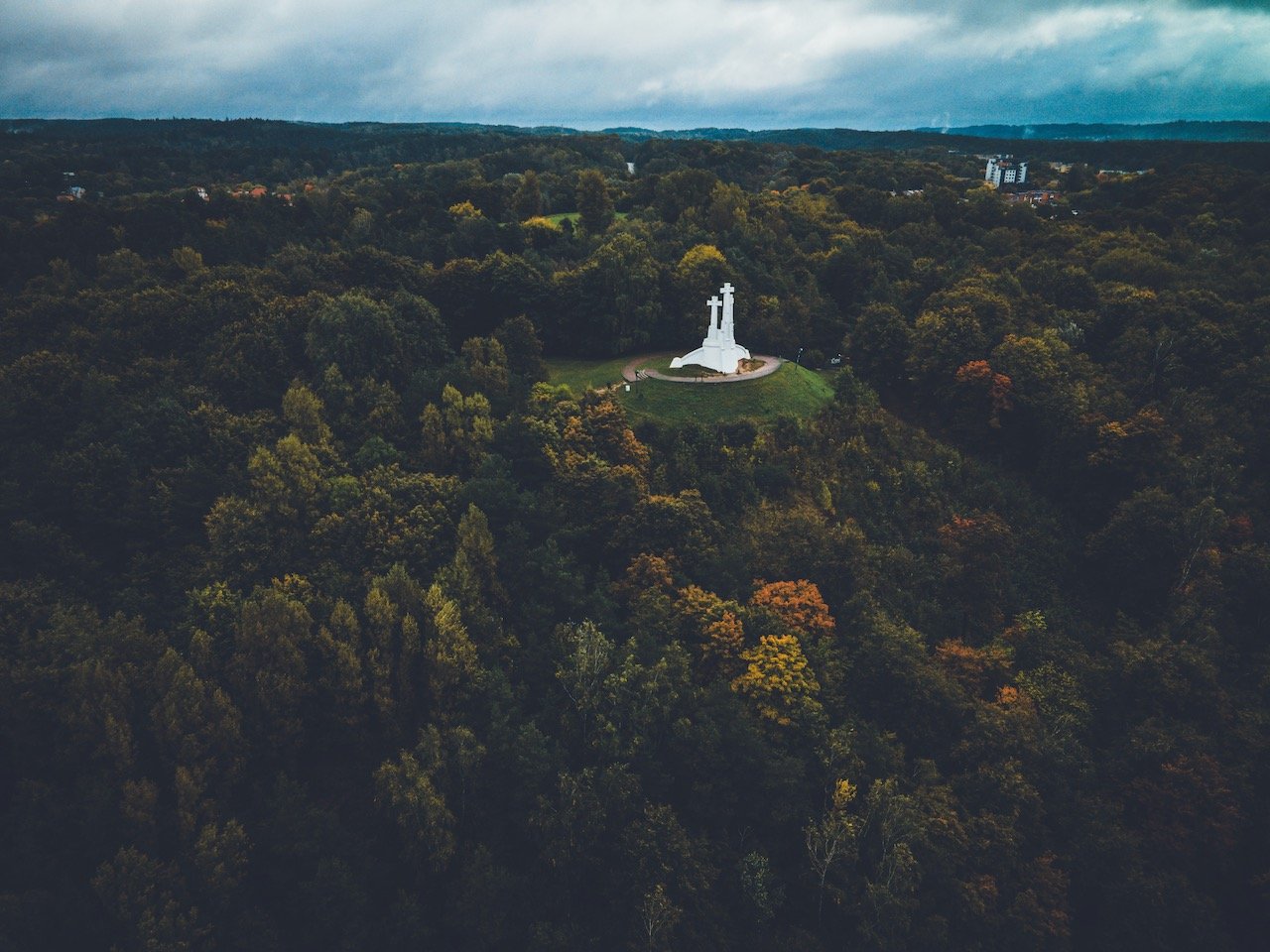
Nestled on top of a hill sits the Monument of the Three Crosses (originally known as Bald Hill, in Kalnai Park). The origin of the crosses date back to a story about the beheading of seven Franciscan friars atop the hill. Wooden crosses were installed in their memory and over time, the crosses were replaced with more robust materials, culminating in the three white crosses you see today. Getting here requires just a short 5 minute hike uphill from the river below and gives you great views of the city (for those who don’t have a drone).

